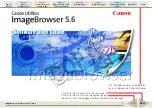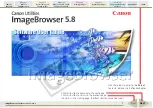Summary of Contents for CERTIFICATE SYSTEM 8 - DEPLOYMENT
Page 5: ...v 9 5 7 Shared Certificate System Subsystem File Locations 119 Index 121 ...
Page 6: ...vi ...
Page 18: ...8 ...
Page 32: ...22 ...
Page 70: ...60 ...
Page 104: ...94 ...
Page 114: ...104 ...
Page 118: ...108 ...
Page 132: ...122 ...



































